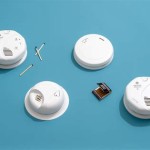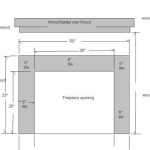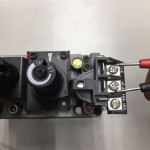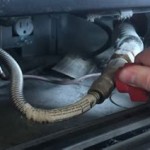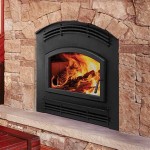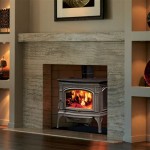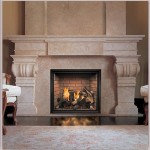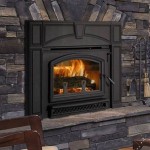Best Radiant Heat Gas Fireplaces for Comfort and Efficiency
Radiant heat gas fireplaces have become increasingly popular for homeowners seeking a cost-effective and visually appealing heating solution. These fireplaces offer a unique approach to warming a space, focusing on directly heating objects and people rather than relying solely on air circulation. Understanding the nuances of radiant heat, the various types of gas fireplaces, and the key features to consider will aid in selecting the best radiant heat gas fireplace for specific needs and preferences.
Radiant heat, unlike convection heat, travels in the form of electromagnetic waves. These waves directly heat objects they encounter, such as furniture, walls, and people. This method creates a more consistent and comfortable warmth, avoiding the temperature fluctuations often associated with convection-based heating systems. Radiant heat fireplaces are particularly effective in larger rooms or spaces with high ceilings, where convection heating can struggle to maintain a consistent temperature throughout.
The efficiency of radiant heat gas fireplaces stems from their ability to deliver heat directly where it is needed. Minimal energy is lost to heating the air, resulting in improved overall heating performance and potentially lower energy bills. Furthermore, radiant heat does not circulate dust and allergens as much as convection heat, contributing to improved indoor air quality. Choosing a radiant heat gas fireplace involves carefully evaluating various factors, including heating capacity, fuel efficiency, safety features, and aesthetic design.
Understanding Radiant Heat Transfer in Gas Fireplaces
The effectiveness of a radiant heat gas fireplace depends heavily on how efficiently it transfers heat. Most gas fireplaces utilize a combination of radiant and convective heat transfer to varying degrees. However, fireplaces specifically designed for radiant heat maximize the emission of infrared radiation. The key components contributing to efficient radiant heat include the design of the firebox, the materials used in its construction, and the presence of radiant panels or surfaces.
The firebox design plays a crucial role in directing heat outwards. A well-designed firebox will incorporate angles and reflective surfaces to maximize the amount of radiant heat directed into the room. Materials with high thermal conductivity, such as cast iron or certain types of ceramic, are commonly used in the construction of the firebox to enhance heat transfer. These materials absorb the heat generated by the gas flame and then radiate it outwards.
Many radiant heat gas fireplaces include radiant panels or surfaces crafted from materials like ceramic glass or specially coated metal. These panels are strategically positioned to maximize surface area and enhance the emission of infrared radiation. The larger the surface area of these panels, the more effectively the fireplace can distribute radiant heat throughout the room. The emissivity of the material also affects performance; higher emissivity materials release more heat at a given temperature.
The type of glass used in the fireplace also impacts radiant heat transfer. Ceramic glass is specifically engineered to withstand high temperatures and transmit a significant amount of radiant heat. Ordinary glass is not suitable for this application as it can shatter under the extreme heat generated by the fireplace. By using ceramic glass, manufactures can maximize the amount of radiant heat that enters the room while maintaining safety and aesthetic appeal.
Types of Radiant Heat Gas Fireplaces
Radiant heat gas fireplaces come in various forms, each with its own advantages and disadvantages. The primary types include direct vent, vent-free, and B-vent fireplaces. The choice of fireplace type depends on factors such as installation requirements, venting options, and personal preferences regarding safety and aesthetics.
Direct vent gas fireplaces are the most common and generally considered the safest option. These fireplaces draw combustion air from outside the home and vent exhaust gases directly outside through a sealed system. This eliminates the risk of carbon monoxide poisoning and ensures efficient combustion. Direct vent fireplaces offer a wide range of design options and heating capacities, making them suitable for various applications.
Vent-free gas fireplaces, also known as ventless fireplaces, do not require a chimney or vent. They burn gas in a highly efficient manner, minimizing the production of harmful emissions. However, vent-free fireplaces require proper ventilation and are equipped with oxygen depletion sensors to shut off the gas supply if oxygen levels drop too low. While they offer flexibility in installation, vent-free fireplaces may not be suitable for individuals with respiratory sensitivities or those concerned about indoor air quality.
B-vent gas fireplaces utilize an existing chimney or require the installation of a B-vent chimney liner. They draw combustion air from inside the home and vent exhaust gases through the chimney. B-vent fireplaces are generally less expensive than direct vent models but may be less efficient due to heat loss through the chimney. They also require regular chimney maintenance to ensure proper venting and prevent carbon monoxide buildup.
Insert gas fireplaces are designed to fit into an existing masonry fireplace. They offer a convenient way to upgrade an outdated wood-burning fireplace to a more efficient and cleaner-burning gas fireplace. Gas fireplace inserts are typically direct vent models and come in a variety of sizes and styles to fit different fireplace openings.
Key Features to Consider When Choosing a Radiant Heat Gas Fireplace
Selecting the best radiant heat gas fireplace requires careful consideration of several key features. These features include heating capacity, fuel efficiency, safety features, aesthetic design, and ease of use. Evaluating these aspects will ensure that the chosen fireplace meets specific heating needs while complementing the home's décor.
Heating capacity, measured in British thermal units (BTUs), indicates the amount of heat the fireplace can generate per hour. The appropriate heating capacity depends on the size of the room or area to be heated. A larger room will require a fireplace with a higher BTU rating. Consulting with a fireplace professional to determine the correct heating capacity for the space is recommended.
Fuel efficiency is an important consideration for minimizing energy costs. Gas fireplaces are rated by their Annual Fuel Utilization Efficiency (AFUE), which indicates the percentage of fuel that is converted into usable heat. A higher AFUE rating indicates greater fuel efficiency. Direct vent fireplaces generally have higher AFUE ratings than B-vent or vent-free models.
Safety features are paramount when selecting a gas fireplace. Look for models equipped with safety features such as oxygen depletion sensors, pressure relief valves, and automatic shut-off mechanisms. These features help to prevent carbon monoxide poisoning and gas leaks. Furthermore, ensure that the fireplace complies with all applicable safety standards and regulations.
Aesthetic design is a subjective but important factor. Gas fireplaces come in a wide range of styles, from traditional to contemporary. Consider the overall décor of the room and choose a fireplace that complements the existing style. Options include various log sets, fire glass, and decorative fronts. It is also important to consider the size and proportions of the fireplace relative to the room.
Ease of use is another important consideration. Look for fireplaces with user-friendly controls and convenient features such as remote control operation, programmable thermostats, and automatic ignition. These features will make the fireplace easier to operate and maintain. Regular maintenance, including cleaning and inspection, is essential for ensuring the safe and efficient operation of the fireplace.

Valor H6 Series Gas Fireplace Installation In

Which Gas Fires Are The Most Efficient Direct Fireplaces

12 Types Of Gas Fireplaces You Need To Know
.aspx?strip=all)
Top 11 Gas Fireplace Insert Trends Of 2024

Radiant Or Convection Heat Here S What You Should Know

Lopi Radiant Plus Large Gsb Gas Fireplace Home Fires

Best High Efficiency Gas Fires Fireside

Radiant Or Convection Heat Here S What You Should Know

Heat Glo Escape Gas Fireplace Inserts Best Fire

The Best Gas Log Sets For 2024 Fireplaces Direct Learning Center
Related Posts

